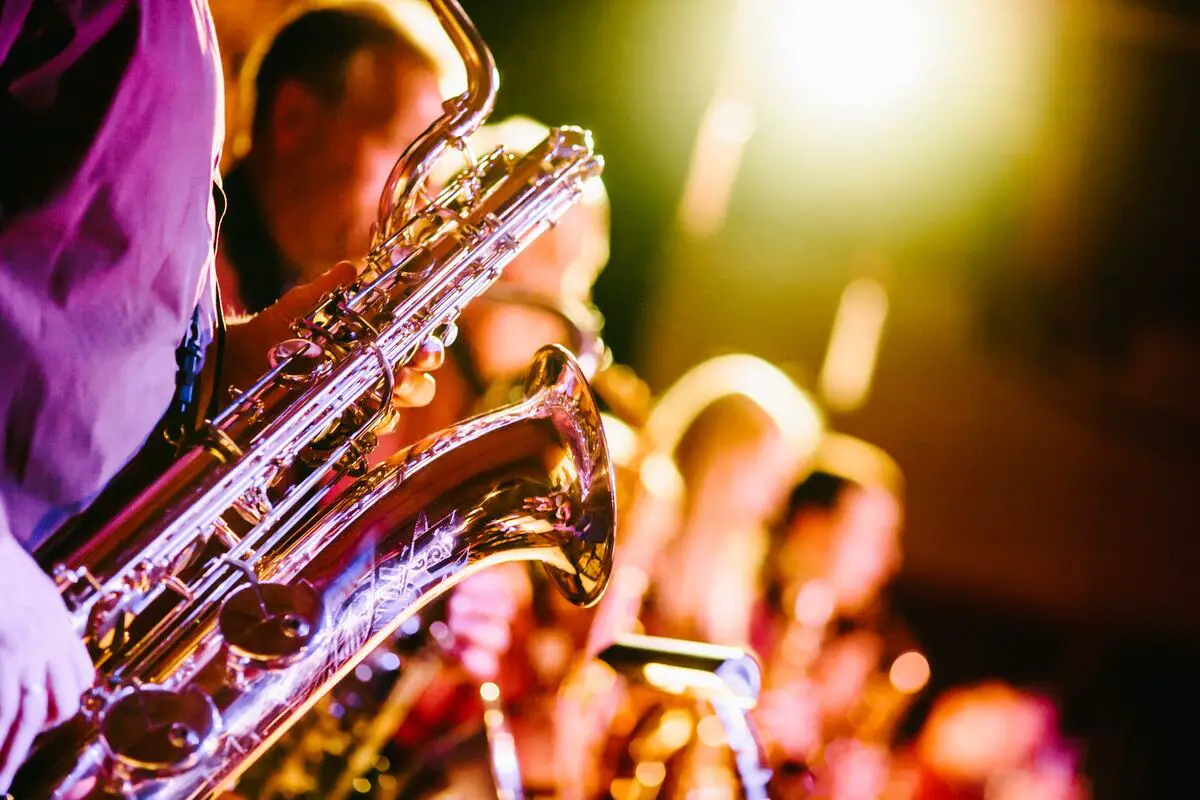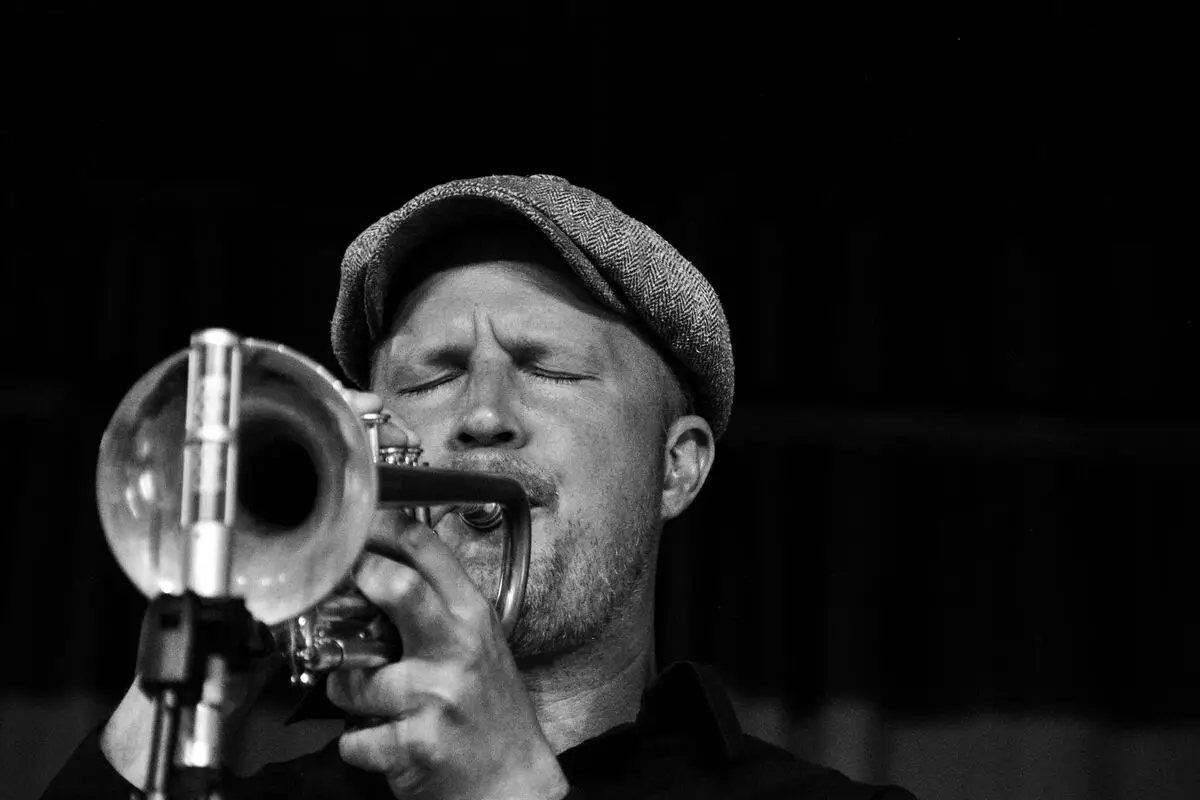Step into the vibrant world of Swing music, where dancing reigns, and uplifting melodies transport you to a bygone era of pure joy. Can you imagine the infectious rhythms and energetic beats that swept people off their feet during the 1930s and 1940s? Brace yourself for an exploration of this legendary genre that will leave you tapping your toes and yearning for the dance floor.
What is swing music? Swing music is a lively, danceable genre that emerged during the 1930s and 1940s, characterized by its upbeat tempo, call-and-response riffs, and formal arrangements. It brought joy and rebellion to a tumultuous time in history.
What is swing music?
Swing music, born in the lively 1930s and 1940s, is a genre characterized by its infectious rhythms, danceable beats, and vibrant melodies. But what sets swing apart from other jazz styles? Unlike traditional jazz, which often features group improvisation, swing music is defined by formal arrangements and focuses on call-and-response riffs. This unique structure gave swing music its distinct sound, making it a favorite among dancers during its heyday.

AKAI Professional MPK Mini MK3

AKAI Professional MPK Mini MK3
Why was swing music so popular?
Let’s take a trip back in time to understand the popularity of swing music. The swing era coincided with two significant historical events: the Great Depression and World War II. In the face of economic hardship and societal turmoil, swing emerged as an uplifting escape, a rebellion against the hardships of daily life.
Swing music captivated audiences with its upbeat tempo, evoking a sense of joy and providing a much-needed respite from the struggles of the time.
Swing music captivated audiences with its upbeat tempo, evoking a sense of joy and providing a much-needed respite from the struggles of the time. The infectious rhythms and clear melodies of swing make it the perfect dance music, appealing to people from all walks of life. From lively dance halls to social gatherings, swing music united people and brought communities together through its universal language of rhythm and melody.
What are the different styles of swing music?
Swing music is not a monolithic genre; it encompasses various styles that cater to different tastes and audiences. Two prominent styles of swing music emerged during the swing era: “sweet” swing and “hot” swing.
- Sweet swing: This style, popularized by artists like Glenn Miller, was characterized by its softer, restrained sound. With fewer improvisations and a slight swing feel, sweet swing often found its place in white upper-class dinner parties. It offered a more refined and melodic approach, appealing to a specific audience seeking a sophisticated ambiance.
- Hot swing: In contrast, hot swing, associated with Duke Ellington and other daring artists, offered a bolder, experimental sound. It embraced longer improvisations, a stronger rhythmic drive, and a rough blues feeling. Hot swing was about pushing boundaries and igniting the dance floor with its energetic beats and adventurous musicality.
What is swing music’s legacy and influence?
As swing music grew in popularity, it paved the way for future musical developments and paved the path for artists to showcase their talents. Swing musicians like Louis Armstrong, Cab Calloway, Count Basie, and Duke Ellington became household names, leaving an indelible mark on the world of music.
The legacy of swing music extends far beyond its heyday. Its influence can still be heard in various genres today, from the catchy melodies and danceable rhythms of pop music to the virtuosic improvisations found in contemporary jazz. Swing music set the stage for the evolution of jazz and left an everlasting impact on the cultural landscape.
To help you along your swing music journey, here’s a handy table highlighting some dos and don’ts when it comes to creating your own swing-inspired tracks:
| Dos | Don’ts |
|---|---|
| Embrace the swing rhythm and syncopation | Overcomplicate arrangements with unnecessary layers |
| Incorporate call-and-response elements | Overlook the importance of clear melodies |
| Experiment with improvisation and solos | Forget to emphasize the danceable beat |
| Study recordings of swing legends for inspiration | Try to mimic swing music without adding your own flair |
How did swing music impact society?
Swing music had a profound impact on society during its time, offering a much-needed escape from the hardships of the Great Depression and World War II. Let’s dive deeper into the various ways swing music influenced society:
- Cultural unity: Swing music served as a unifying force in a divided world. Its catchy beats and infectious melodies transcended racial and socioeconomic boundaries, bringing people together on the dance floor. Swing music was embraced by diverse communities, fostering a sense of unity and joy during a tumultuous era.
- Economic boost: The swing era generated a significant economic boost as the popularity of big bands soared. Dance halls and clubs flourished, providing entertainment and employment opportunities for musicians, dancers, and other industry professionals. The swing music phenomenon helped stimulate the economy and provided a glimmer of hope during challenging times.
- Social change: Swing music was pivotal in challenging social norms and breaking racial barriers. Despite segregation and discrimination prevalent during that period, swing music marked a significant shift in racial perceptions. Both black and white musicians collaborated and performed together, crossing racial boundaries and inspiring societal change.
- Musical Evolution: Swing music sparked a wave of musical evolution. It laid the foundation for developing other genres like bebop, which departed from the structured arrangements of swing and embraced more complex and innovative improvisations. Swing music became a catalyst for artists to experiment and reshape the boundaries of jazz and popular music.
Can swing music still be enjoyed today?
While swing music’s heyday may have passed, its influence and timeless appeal continue to resonate with music enthusiasts today. Swing music serves as a bridge between the past and present, reminding us of the joy and energy it brought to people’s lives.
Swing music’s enduring appeal lies in its ability to create a joyful atmosphere and connect people through its energetic rhythms and captivating melodies. Whether you’re a fan of the classics or a curious newcomer, swing music offers a delightful journey into the sounds of a bygone era.

- Dance Communities: Swing dancing communities continue to thrive around the world, where people of all ages gather to learn, practice, and enjoy the lively art form. Whether it’s Lindy Hop, Charleston, or Balboa, swing dancing provides a vibrant and social experience that connects generations.
- Jazz Appreciation: Jazz enthusiasts and musicians cherish swing music for its historical significance and musicality. Countless recordings from the swing era still captivate audiences, inviting them to explore the rich catalog of swing music by iconic artists such as Benny Goodman, Artie Shaw, and Tommy Dorsey.
- Revivals and Tributes: Swing music experiences periodic revivals and tributes in various forms. Contemporary jazz artists and big bands often incorporate swing elements in their compositions, paying homage to the genre’s vibrant spirit. Events like swing festivals and tribute concerts keep the swing music flame alive, offering a chance for modern audiences to experience its magic firsthand.
If you want even more great tips and information, check out the video below.
Frequently Asked Questions (FAQ)
Do you still have questions about swing music? Below are some of the most commonly asked questions.
Can swing music be incorporated into modern music genres?
Absolutely! Swing music can be a fantastic source of inspiration for modern music genres. By infusing swing elements such as rhythms, instrumentation, and arrangements, you can add a unique and unexpected twist to your compositions, creating a fresh and vibrant sound that appeals to contemporary audiences.
Is swing music limited to a specific type of instrument?
Not at all! While swing music is often associated with brass and woodwind instruments prevalent in big bands, it can be adapted to various instruments and styles. Whether you play guitar, piano, drums, or electronic instruments, you can still capture the essence of swing music through rhythmic patterns, call-and-response elements, and melodic phrasing.
Can swing music be enjoyed by younger generations?
Absolutely! Swing music has a timeless appeal that transcends generations. Many younger listeners, dancers, and musicians are exploring swing music and embracing its lively rhythms and infectious melodies. Swing dances, events, and festivals often attract a diverse range of age groups, creating a vibrant and inclusive community of swing enthusiasts.
Conclusion
Did I cover everything you wanted to know? Let me know in the comments section below. I read and reply to every comment. If you found this article helpful, share it with a friend, and check out my full blog for more tips and tricks on swing music. Thanks for reading and keep on swinging!
Key Takeaways
This article covered swing music, its origins, styles, and impact. Here are some key takeaways:
- Swing music emerged as a danceable genre in the 1930s and 1940s, characterized by lively rhythms and clear melodies.
- It had two main styles: “sweet” swing and “hot” swing, catering to different audiences and preferences.
- Swing music’s popularity provided a source of joy and unity during challenging historical periods.
- It influenced society through cultural unity, economic growth, and social change.
- Swing music continues to inspire modern music production and recording, offering unique elements to enhance compositions.
- Remember to experiment, embrace the swing spirit, and let the infectious rhythms of swing uplift your music and your spirit.















